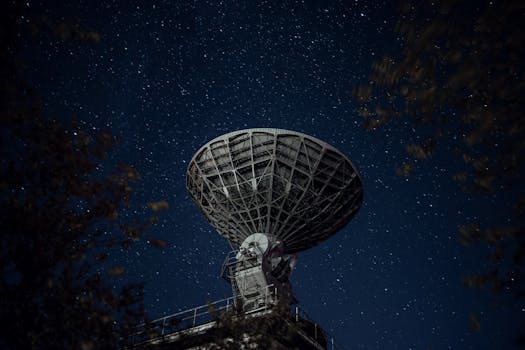
The Rise of Mega-Constellations: Latest Updates in Satellite Telecommunications
The Rise of Mega-Constellations: Latest Updates in Satellite Telecommunications. The satellite telecommunications industry is on the cusp of a revolution, driven by the emergence of mega-constellations. These large networks of satellites in low Earth orbit (LEO) are set to transform the way we communicate, navigate, and access data. In this article, we will explore the latest updates on mega-constellations and their impact on satellite telecommunications.
Mega-constellations are designed to provide global coverage, offering high-speed, low-latency connectivity to remote and underserved areas. The benefits of mega-constellations are numerous, including improved connectivity, increased capacity, and reduced costs. However, there are also challenges associated with the deployment of mega-constellations, such as the risk of space debris, interference with other satellite systems, and the need for advanced technology to manage the complex networks.
What are Mega-Constellations?
Mega-constellations are large networks of satellites in LEO, typically consisting of hundreds or thousands of satellites. These satellites are designed to work together to provide global coverage, offering a range of services including broadband internet, navigation, and Earth observation. The first mega-constellation was launched by Iridium in the 1990s, but the latest generation of mega-constellations is much larger and more complex.
One of the key players in the mega-constellation market is SpaceX, which is launching a network of over 40,000 satellites as part of its Starlink program. Other companies, such as Amazon’s Kuiper Systems and OneWeb, are also launching their own mega-constellations. The deployment of these networks is expected to have a significant impact on the satellite telecommunications industry, enabling the provision of high-speed, low-latency connectivity to remote and underserved areas.
Benefits of Mega-Constellations
The benefits of mega-constellations are numerous. One of the main advantages is improved connectivity, particularly in remote and underserved areas. Mega-constellations can provide high-speed, low-latency connectivity to areas that are currently unserved or underserved by traditional telecommunications networks. This can have a significant impact on communities, enabling access to education, healthcare, and other essential services.
Mega-constellations can also increase capacity, enabling the provision of high-speed internet services to a large number of users. This can be particularly beneficial in areas with high demand for data services, such as urban centers. Additionally, mega-constellations can reduce costs, as the satellites can be launched in large numbers, reducing the cost per satellite.
Challenges of Mega-Constellations
Despite the benefits of mega-constellations, there are also challenges associated with their deployment. One of the main concerns is the risk of space debris, as the large number of satellites in LEO can increase the risk of collisions and the generation of debris. This can have a significant impact on the long-term sustainability of space activities, as debris can remain in orbit for many years, posing a risk to other satellites and spacecraft.
Another challenge is interference with other satellite systems, as the large number of satellites in LEO can cause interference with other satellite systems, such as GPS and weather satellites. This can have a significant impact on the provision of essential services, such as navigation and weather forecasting. Additionally, the deployment of mega-constellations requires advanced technology to manage the complex networks, which can be a significant challenge.
Conclusion
In conclusion, the rise of mega-constellations is set to transform the satellite telecommunications industry, enabling the provision of high-speed, low-latency connectivity to remote and underserved areas. While there are challenges associated with the deployment of mega-constellations, such as the risk of space debris and interference with other satellite systems, the benefits are numerous. As the industry continues to evolve, it is likely that we will see significant advances in technology, enabling the efficient and sustainable deployment of mega-constellations.



